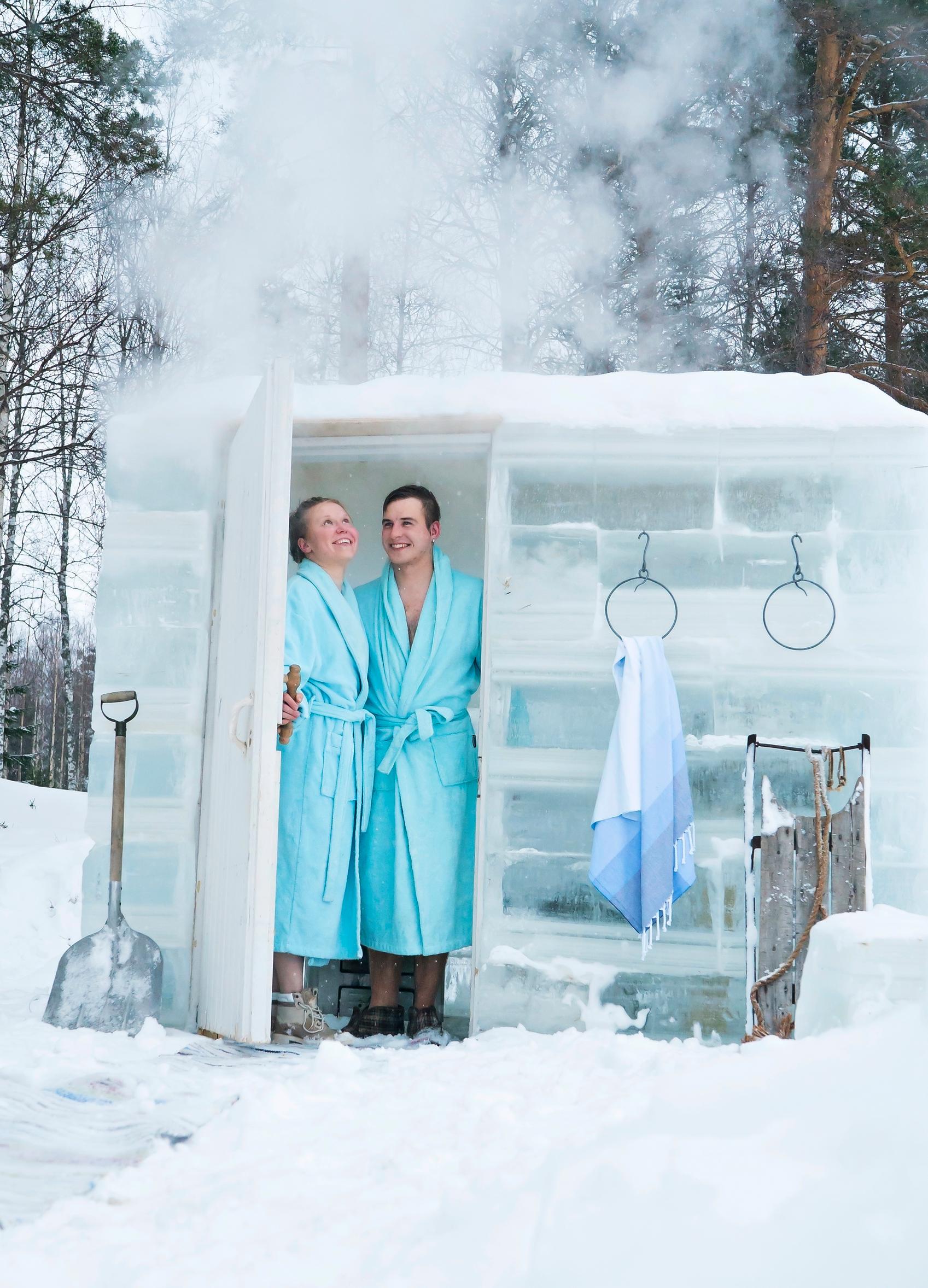
Wondrous sauna built from ice: “The more we bathe, the faster the sauna season ends”
Inside the ice sauna, Henri and Soile savor the steam like there’s no tomorrow: the fun will end when spring arrives. The moisture evaporating from the ice walls makes the steam incredibly gentle.
At first glance, the view from Henri Hytönen and Soile Runtti’s lakeside cottage appears quite ordinary. But upon closer inspection, the scene becomes surreal. On the frozen lake, a sauna stove sits on sled runners, and beside it stands an ice sauna emitting a mysterious, frosty blue glow.
The couple decided to try building an ice sauna in the garden of their cottage in Äänekoski, Finland, as their previous attempts at constructing an igloo had been encouraging after some initial difficulties.
They began the icy project during the January frosts. First, they used a chainsaw to cut a seven-meter-long hole in the shallow waters of Lake Keitele to allow sufficiently strong ice to form for the construction.
“We cleared the hole of ice chunks and let the frost gradually form new, strong solid ice,” Henri explains.


When the ice was thick enough, Henri cut blocks from it for the construction. Occasionally, he had to warm up the frozen chainsaw chain indoors.
Henri sawed and lifted the ice blocks into place, while Soile mortared them together with slush. Henri decided to also build ice steps to make installing the upper layers of blocks easier.
“I’m amazed we didn’t fall into the icy shoreline waters even once,” Soile says with a laugh.
Initially, they planned for a sauna larger than the current five square meters, but the laboriousness of sawing convinced them to settle for a smaller one. They also abandoned the idea of an arched roof. The current roofing solution keeps the stove’s heat well within the walls.
“We installed a panel as the roof with styrofoam on top. We blended the structure into the landscape with snow,” Henri says.


They had planned for icy sauna benches but eventually decided against it. To speed up completion, Henri made quick benches out of wood.
Heating the ICE sauna up takes a couple of hours. Henri got a used sauna stove from a friend who was renovating his sauna. He welded runners under the stove—but not just for aesthetics.
“Heating the stove inside the ice sauna would melt the structure too much, so we heat it outside. When the stones are hot enough, we push the stove inside with oven mitts,” Henri explains.
A chimney pipe connected to the sauna wall safely directs smoke outside. The first time they tried the sauna, the couple brought a carbon monoxide detector with them just to be safe.
“It’s all in good fun, even if someone might think we’re heating the stove for nothing. We start preparations well in advance so we can get to the sauna while it’s still light out,” Soile says.
Soile and Henri shower inside the cottage and slip into the warmth of the ice sauna wearing their bathrobes.


The couple believes that the ice sauna experience is better than in any other sauna they’ve bathed in. As the ice melts, the air fills with incredible humidity. Water streams form on the walls.
All the necessary light comes through the ice walls. Just in case, Henri has fitted LED lights into the lowest layer of ice blocks.
Soile and Henri are still considering making the ice benches. At the same time, they’re pondering what will happen to the structure when the sun conquers the frost in the spring.
“We’ll see whether our sauna ends up as a raft on the lake or gradually melts on the ice. Of course, its longevity depends on us too. The more we bathe, the faster the sauna season ends,” Henri notes.
And best of all, the builder of an ice sauna doesn’t need a building permit, and no inspector will come to measure the sauna’s distance from the waterline.



